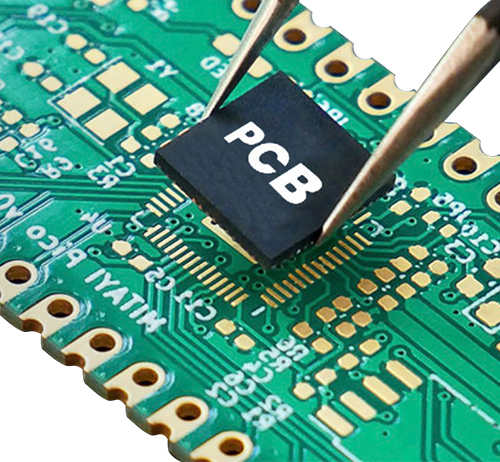Time:2022-10-25 Visit:
The so -called copper covering is to use the idle space on the PCB as the benchmark surface, and then fill it with solid copper. These copper areas are also called irrigated copper. The significance of copper covering is to reduce ground impedance and improve anti -interference capacity; reduce voltage drop and improve power efficiency; connecting with ground wires can also reduce the area of the ring circuit. It is also for the purpose of making PCB as much as possible when welding. Most PCB manufacturers will also require PCB designers to fill the copper skin or grid -like ground line in the empty area of PCB. Is it impossible to reward, is it "benefits greater than disadvantages" or "disadvantages than benefits"?

Everyone knows that in the case of high frequency, the distributed capacitors on the wiring on the printing circuit board will work. When the length is 1/20 than the corresponding wavelength of the noise frequency, an antenna effect will be generated, and the noise will be launched outward through the wiring. If there is a bronze covering in PCB, the copper covering becomes a tool for spreading noise. Therefore, in the high -frequency circuit, do not think that the ground wire is connected to the ground. "Line", must be used to play holes on the wiring at a distance of less than λ/20, and "good ground" with the horizon of multi -layer boards. If the copper covering treatment is appropriate, the copper covering not only has increased current, but also has a dual effect of shielding interference.
There are two basic ways of copper covering, namely a large area of copper covering and grid copper. It is often asked that large -scale copper covering is better or mesh covering copper. It is not easy to generalize. why? Large -scale copper covering has a dual effect of increasing current and shielding, but large -scale copper is covered. If the peak is welded, the board may be tilted and even foam. Therefore, a large area of copper is generally opened, and a few grooves are generally opened to relieve the copper foil foam. The simple mesh covering copper is mainly shielded, and the effect of increasing the current is reduced. From the perspective of heat dissipation, the grid is good for the benefits of the grid. (It reduces the heating surface of copper) and also plays a certain role of electromagnetic shielding. However, it should be pointed out that the grid is composed of a routing in the staggered direction. We know that for the circuit, the width of the wiring on the circuit board has its corresponding "electric length" (actual size removal (actual size removal removed " The digital frequency corresponding to the working frequency is available, and the relevant books are visible). When the operating frequency is not very high, maybe the role of the grid line is not obvious. Once the electrical length and the working frequency match, it is very bad. It will be found that the circuit cannot work normally, and the signal of the interference system work everywhere. Therefore, for my colleagues who use grids, my suggestion is to choose according to the design of the circuit board designed. Therefore, high -frequency circuit counter -interference requirements are high -use grids, low -frequency circuits have large -current circuits and other commonly used copper.